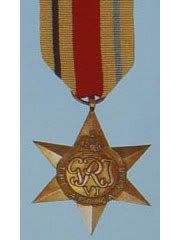You are using an out of date browser. It may not display this or other websites correctly.
You should upgrade or use an alternative browser.
You should upgrade or use an alternative browser.
WWII Quiz
MontyB
All-Blacks Supporter
B-17 Flying Fort in German Markings
Flown by KG-200?
Indeed it is.
Allied bombers in Luftwaffe service
During the war, the Luftwaffe downed many allied bombers over German held territory. Others landed because of technical problems. Some of these bombers remained flyable. Initially these captured bombers, such as American B-17s and B-24s and Russian Pe-2s and Tupolevs and other aircraft, were flown by the Luftwaffe for studying their capabilities for intelligence and technological analysis. These test-flown bombers were given Luftwaffe markings, like the one in the picture above. Later, KG 200 began to use these captured long range bombers for its top secret missions. With the increasing air superiority of allied air forces, the German retreats, and the increasing use of RADAR and RADAR-equipped night fighters, it became ever harder for the German bombers to fly deep into allied airspace. Flying long-ranged captured allied bombers instead of the smaller and shorter range German bombers was a perfect solution for the Luftwaffe. These bombers could fly further and could fly over the most protected allied targets, day and night, without being even shot at, as they looked and sounded exactly like allied bombers. It was the perfect equivalent of the stealth bomber. The captured allied bombers used by KG 200 were not given German markings and remained with their original allied colors and markings for complete day or night deception of allied pilots and anti-aircraft gunners which saw them. They could fly anywhere, day or night, make aerial photos, drop agents, bomb targets, track allied bomber formations and constantly report their exact position and altitude without being intercepted by their fighter escorts, etc, etc, and so they did.
http://www.2worldwar2.com/kg200.htm
MontyB
All-Blacks Supporter
Go ahead and ask a question Monty I sux at coming up with questions.
I guess we can open it up to anyone with a question, although I did steal LeEnfields turn.
The Other Guy
Spam King
I'll go.
Name the predecessor to the famous B-17 Flying Fortress, which flew as a transport during WWII. It was manufactured by Boeing.
Name the predecessor to the famous B-17 Flying Fortress, which flew as a transport during WWII. It was manufactured by Boeing.
MontyB
All-Blacks Supporter
I'll go.
Name the predecessor to the famous B-17 Flying Fortress, which flew as a transport during WWII. It was manufactured by Boeing.
The C-73 Transport (Boeing 247)?
The Other Guy
Spam King
The Other Guy
Spam King
No........
tomtom22
Chief Engineer
source: http://en.wikipedia.org/wiki/Boeing_XB-15The XB-15 was designed around liquid-cooled 1,000 hp (750 kW) engines. Unfortunately, these were not available, and 850 hp (637 kW) radial air-cooled engines were used instead. These engines left the bomber significantly underpowered; its top speed of 200 mph (322 km/h) was far too slow for a combat aircraft, and the project was abandoned. Even without the improved defensive armament that would have been needed in service, the XB-15 had a maximum takeoff weight 5,000 pounds greater than the later B-17G, but with a total engine output of 1,800 less horsepower.
No B-15s were put into service; the Army Air Corps converted the only prototype into a transport designated the XC-105, which carried freight around the Caribbean during World War II. The sole XC-105 was scrapped in Panama in 1945.
The Other Guy
Spam King
Got it.
You're up, tomtom.
You're up, tomtom.
MontyB
All-Blacks Supporter
What is the most produced fighter aircraft of World War II?
I will go with the Messerschmitt Bf-109
MontyB
All-Blacks Supporter
Yes that's right, I forgot to mention in the question most produced US fighter, and the answer would have been the P-47 Thunderbolt.
You have it MontyB.
Ok a nice easy one...
Name this medal and for what it was awarded.

MontyB
All-Blacks Supporter
Africa star, awarded to british military personnel that served in africa between 1940 and 1943?
Indeed it is:
About this medal
The Africa Star was awarded to British and Commonwealth forces for service in North Africa between 10 June 1940 and 12 May 1943.
About the ribbon
The ribbon is pale buff in colour, with a central vertical red stripe, and narrower stripes, one dark blue and the other light blue. The pale buff background symbolises the desert, the central red stripe symbolises the Army, the dark blue stripe symbolises the Navy and Merchant Navy, and the light blue stripe symbolises the Air Force.
Your turn.
perseus
Active member
Starting in late 1944, some Panther Ausf.G were outfitted with the "FG 1250" infra-red searchlight and scope.
http://www.geocities.com/desertfox1891/nightfightingpanthers/nightfightingpanthers.htm
BTW still got my Dad's Africa Star
http://www.geocities.com/desertfox1891/nightfightingpanthers/nightfightingpanthers.htm
BTW still got my Dad's Africa Star
